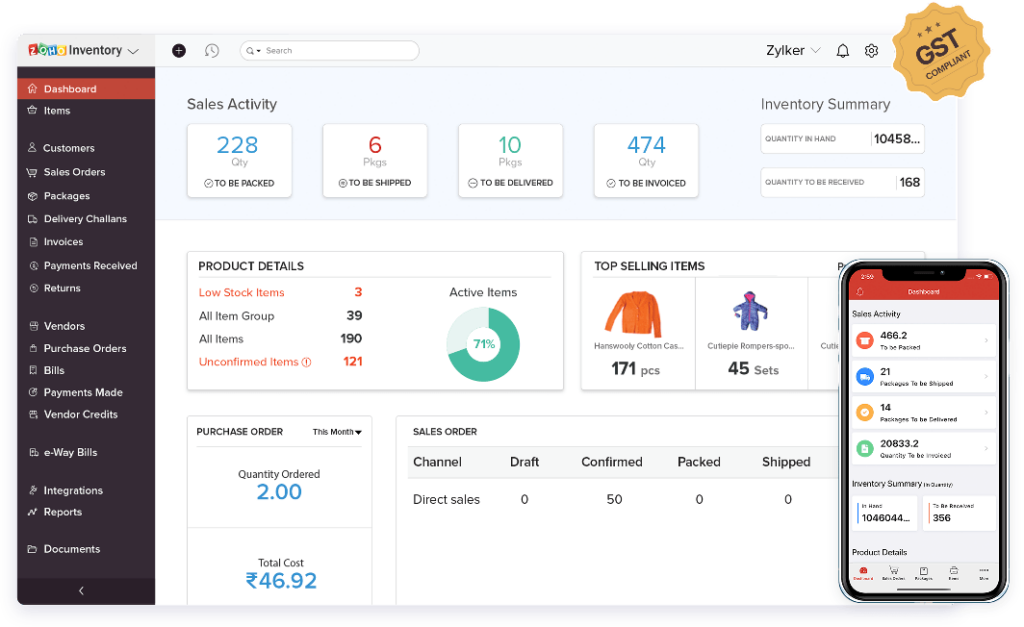
Given the dynamic nature of the business-to-business (B2B) market, e-commerce has become more than a convenience in recent years; it’s now a need. The recent rapid expansion of online shopping has only increased the importance of B2B companies moving their operations online.
According to Digital Commerce 360, 42% of wholesalers see upgrading their website to better serve clients as their top priority for the coming year.
We’ve culled the latest developments in B2B ecommerce that we believe will have the most significant effect on your company so you can keep current.
Top Trends in B2B ecommerce for 2023

This year will be hard for B2B companies. We’ve put together a list of the top B2B ecommerce trends you need to know to be successful with this type of business.
- Leave old systems behind.
- Invest in technology for an ecommerce platform.
- Make online shopping more fun by adding your own touches.
- Give product information and discovery top priority.
- Sell on online marketplaces run by other people.
- Explore social media platforms.
- Fulfill orders even faster.
Leave old systems behind
In 2022, 36.6% of distributors will find it hard to upgrade their old systems. But if you want to give your new and old customers a better, more B2C-like experience, you’ll need to make sure you have the right systems in place.
Many companies make the mistake of only upgrading their systems when they need to. Which can make it harder to combine technologies in the future and put you right back where you started.
Instead, come up with a plan for digital transformation that is based on your business’s overall goals and vision, not just your technology needs.
Invest in technology for an ecommerce platform
When planning your digital transformation, your B2B ecommerce platform is a great place to start because it can be the hub of your digital ecosystem. And in fact, for 35% of US B2B businesses, investing in ecommerce platform technology is their top priority.
But not all eCommerce platforms are the same. Many still work as monoliths, or “one-size-fits-all” solutions, which means you can’t choose the best one for your needs.
On the other side of the spectrum, you’ll find platforms that don’t truly support B2B ecommerce functionality. Instead, they may offer a few features or ways to get around the problem.
With modern SaaS ecommerce solutions, like BigCommerce, you can get all the benefits that come with SaaS — robust security, speed to innovate and lower total cost of ownership — as well as features that support the complexities of B2B.
Make online shopping more fun by adding your own touches
50% of B2B buyers said that improved personalization was a key feature when they were looking for online suppliers to build relationships with. When consumers have a personalized experience, they spend 48% more money.
The online store TYGRIS and their digital agency used a headless solution to give their customers more personalized experiences.
“The middleware portal on MyTYGRIS.com was made with the help of APIs from BigCommerce and Dropbox Business. It lets customers connect to it through an API to place orders or check stock levels and data that are pushed or pulled from the BigCommerce platform. “MyTYGRIS.com acts as validation between all connected systems,” said Matt Sandham, director of bspoq.
And that’s one reason why so many B2B companies are turning to headless commerce: it can make it easier to create and deliver personalized shopping experiences.
In addition to headless commerce, there are many personalization solutions that use AI and machine learning to build customer segments and let marketers take immediate action through recommendations, triggered emails, automatic optimization, and real-time messaging.
Give product information and discovery top priority
Finding products is one of the most frustrating things for B2B buyers who shop online. Even if they can find the products, they still face challenges finding up-to-date information.
And B2Bs can solve this problem in a number of ways. One is with product information management (PIM) software. PIMs are helpful because they collect, manage, enrich, and share product information across channels, such as your ecommerce storefront or mobile app, social sales channels, marketplaces, and even advertising networks.
B2Bs can also use back-office technology, which can help automate tasks that used to be done by hand. For example, a lot of B2B companies use spreadsheets to keep track of product information or stock. But if you use the right back-office system, like an ERP, you can keep all of your catalog information in one place that’s linked to your website so that updates and changes show up right away.
An easy option that can also help is to use a chatbot that can direct shoppers to product pages or encourage them to start a conversation with your B2B sales team if they’ve never purchased a product with you before.
Sell on B2B marketplaces run by other companies
Marketplaces are a key part of the path that B2B buyers take. In fact, marketplaces are where a lot of B2B buyers get ideas and start their search for products.
Not only that, but 15% of US buyers and 20% of UK buyers make their purchases through Amazon Business, which is just one of many third-party B2B marketplaces.
One of the best things about marketplaces run by third parties is that they can bring in new customers. Not only can this mean more sales, but it’s also an opportunity to reach global markets and test new products.
“Many successful B2B merchants are leveraging tools like Feedonomics to optimize their marketplace strategy. In fact, Feedonomics helps B2B sellers make their Amazon listings easier to use. For instance, Feedonomics’s integration with Amazon Business lets B2Bs offer discounts to customers who buy in bulk and prices that are only visible to registered Amazon Business customers “Feedonomics Vice President of Marketplaces Dmitriy Ryzhiy says so.
Explore social media platforms
Social media commerce has been dominated by B2C companies in the past, but B2B companies are now trying to get in on the action because many of their customers are already using these channels.
According to Gartner, about 46% of B2B buyers use social media to learn about available solutions, 40% use it to compare solutions, and 35% use it for need-to-know information before they complete a purchase.
Gartner also found something interesting: 54% of B2Bs have set up an online store with the help of social commerce.
You can still try out B2B marketing through social media, even if the idea of selling and offering checkout through social media is too scary for you right now.
Choose the platform(s) that your audience is most likely to use and start making different posts, like a video showing how your product works or quotes from customers talking about their experiences with your business. This can help you figure out what kinds of content your audience likes best.
Fulfill orders even faster
As more and more B2B companies go digital, it’s more important than ever to have fast and efficient fulfillment processes. In a post-Amazon world, millennials are driving this demand with 73% of them involved in the B2B buying process today.
Customer expectations are growing, and this is another way B2Bs can appeal to the buyer. B2Bs can streamline fulfillment processes by using order management software. This kind of software can help a B2B manage orders across different sales platforms, keep information in one place, and simplify the supply chain.
Third-party fulfillment is another way for B2Bs to get things moving. Third-party fulfillment, or 3PL, is a great option if your business is growing quickly, your fulfillment costs are going up, or you spend too much time managing your inventory.
Conclusion
B2B companies should focus on the new trends we’ve found, such as getting rid of old systems, investing in ecommerce technology, making shopping more personal, and looking into new sales channels.
Even though it might seem important to put them in order of importance, the key to success will be getting information about your customers and making a plan for digital transformation. Because once you have that, you can use it as a plan to get where you want to go.





